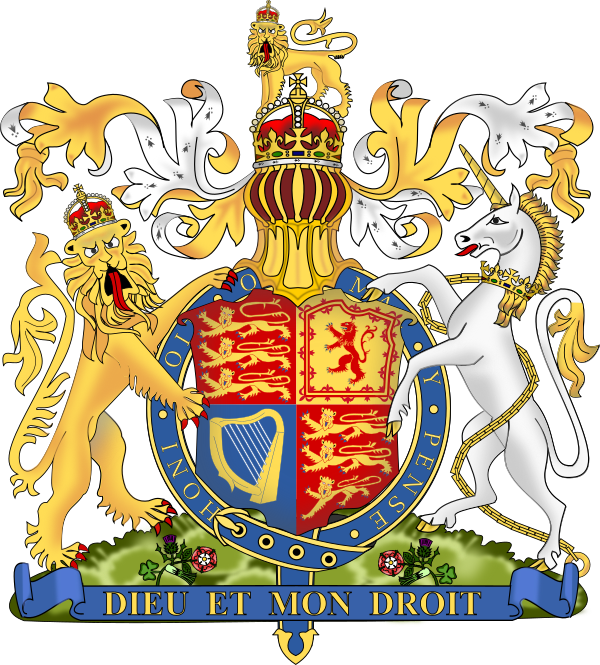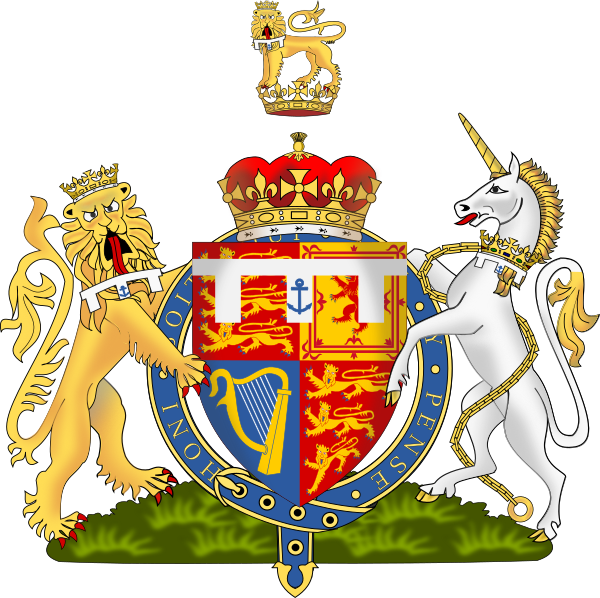 |
|
George VI reigned for a little over 15 years, through the Second World War and on to see the beginning of the post-war dismantling of the British Empire with independence granted to India, Burma and Ceylon. George was known by his first name of Albert before ascending the throne, and, like his father George V, was a second son who didn't expect to ever become king. His succession to the throne was brought about by the abdication of his elder brother, Edward VIII. Like his father, Prince Albert initially undertook a naval career, was created Duke of York, and was granted arms differenced by a white three-pointed label with a blue anchor on the middle point. As king, he used the 1837 UK royal arms. |
 |
| Arms as prince and Duke of York, 1912-1936 |
.jpg)
|
| Possibly Bertram Park, Public domain, via Wikimedia Commons |
|
Full name: Albert Frederick Arthur George of Windsor (before November 1917 of Saxe-Coburg and Gotha) Style as monarch: His Majesty The King Formal title as monarch:
George the Sixth, by the Grace of God of Great Britain, Ireland
and the British Dominions beyond the Seas, King, Defender of the
Faith, Emperor of India Titles prior to succession: Duke of York, Earl of Inverness, and Baron Killarney Born: 14 December 1895, at York Cottage, Sandringham, Norfolk Succeeded to the throne: 11 December 1936 Crowned: 12 May 1937, at Westminster Abbey Married: At Westminster Abbey, 26 April 1923, to Lady Elizabeth Bowes-Lyon Died: 6 February 1952, at Sandringham, Norfolk Issue: Queen Elizabeth II; Princess Margaret, Countess of Snowdon |